
Earth and planetary sciences graduate student Sarah Hurley (left) and research assistant Peter Hedman draw chalk murals on the slate panels outside of Hoffman Laboratory. The murals offer passers-by a glimpse into three earlier eras in the history of life and of Earth.
Jon Chase/Harvard Staff Photographer
Time travel in chalk
Lab wall drawings spotlight three great eras of geology, life
A group of Harvard and MIT scientists put down their lab instruments and picked up artists’ tools recently, creating a visual time machine to take Hoffman Laboratory passers-by to three earlier eras in the history of life and of planet Earth.
The project was the brainchild of Ann Pearson, a professor of biogeochemistry whose laboratory occupies the first floor of the Hoffman Lab building. Pearson just moved into the space and asked administrators if the tall slate panels lining the building’s first floor could be replaced by windows to allow people walking by to see science being conducted. When that proposal didn’t work, she came up with another way to bring science to the public.
The slate on Hoffman’s ground level is as smooth as a chalkboard, she said, so, in consultation with Phoebe Cohen, the education and outreach coordinator for the NASA Astrobiology Institute, of which Pearson is a member, they hit on the idea of creating temporary chalk drawings depicting scientific themes. Because Hoffman is near the Harvard Museum of Natural History, the panels would be seen by a large number of museum visitors.
On Thursday evening (July 29), Pearson, Cohen, and half a dozen members of Pearson’s lab team gathered outside Hoffman. Using a laptop and a projector, they traced designs created by Cohen depicting three great geological eras: the Paleozoic, which ran from 542 million to 250 million years ago; the Mesozoic, 250 million to about 67 million years ago; and the Cenozoic, which runs from the end of the Mesozoic to the present.
Each panel includes a central map of the world surrounded with animals typical of the time. For the Paleozoic, that means supercontinents, trilobytes, and dragonflies. For the Mesozoic, that means dinosaurs and continents in arrangements still very different from the present. For the Cenozoic, that means mammals and continents that people would recognize from today’s maps.
Because the chalk drawings are exposed to the weather, Cohen said, artists would renew them from time to time and were planning on future versions of the murals focusing on plants from different geological eras, and then bacterial life.
“It’s transitory art, just like life itself. A lot of the things we’re drawing here are extinct now,” Cohen said.
Chalk murals: Depicting life Jon Chase/Harvard Staff Photographer
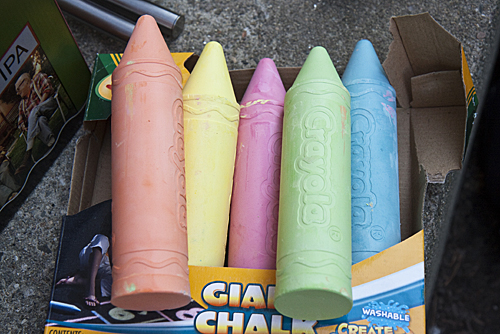
Chalk it up
A chalk mural project on the slate panels outside Hoffman Laboratory will give passers-by a glimpse into three great eras in Earth’s history: the Paleozoic, Mesozoic, and Cenozoic.
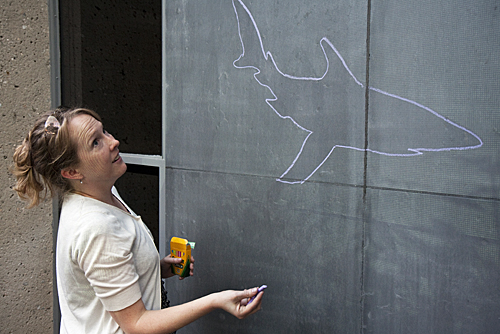
Tracing life
Professor of biogeochemistry Ann Pearson, who headed the project, traces a shape in chalk for one of the murals.
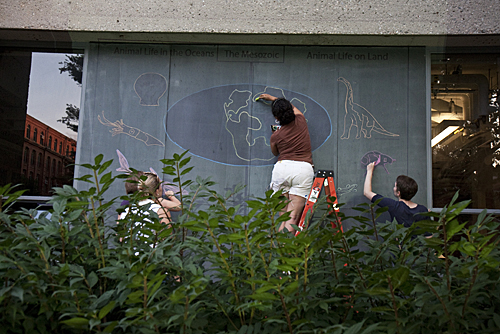
See the writing on the wall…
The team of scientists put their artistic talents to work.
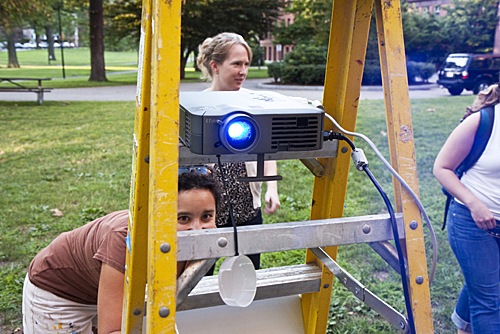
Projecting the past
Phoebe Cohen (left), a member of the NASA Astrobiology Institute, adjusts the projector.
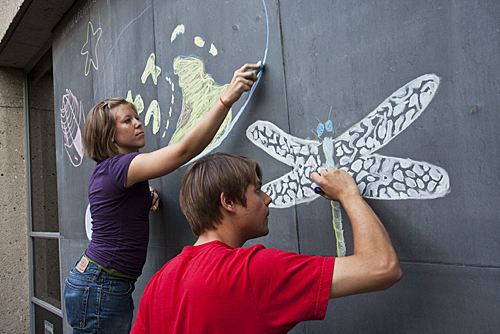
Budding artists
Earth and planetary sciences graduate student Sarah Hurley (left) and research assistant Peter Hedman help with the murals.
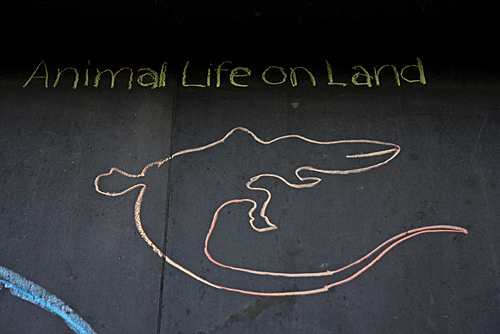
Animal life
Each panel includes a central map of the world surrounded with animals typical of the time.
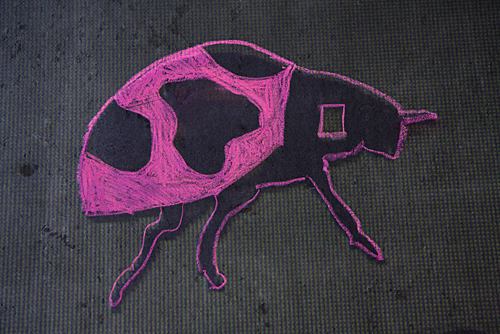
Pretty in pink
Because the chalk drawings are exposed to the weather, artists will renew them from time to time.
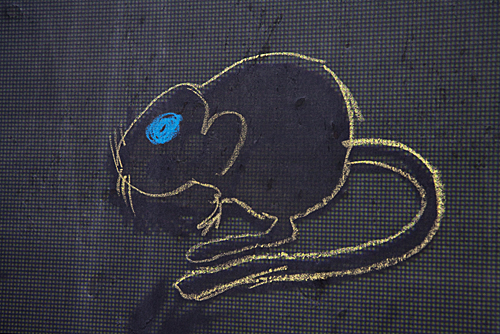
Little critter
“It’s transitory art, just like life itself. A lot of the things we’re drawing here are extinct now,” says Cohen.




